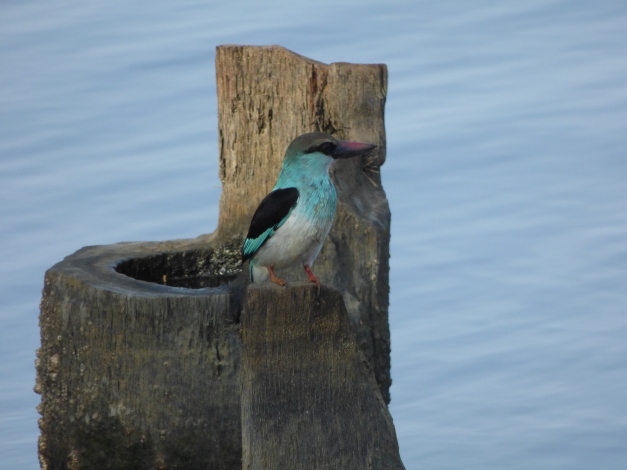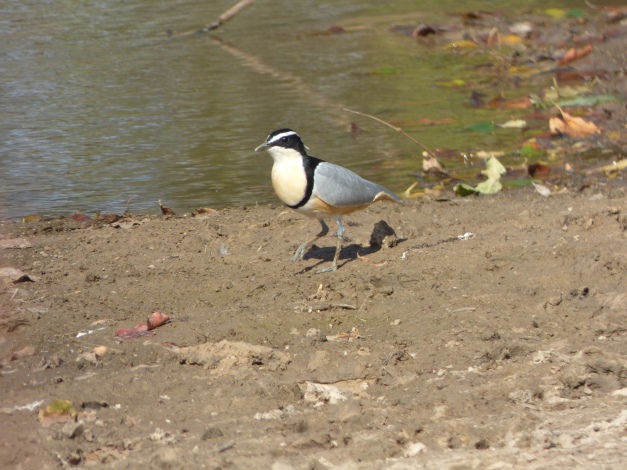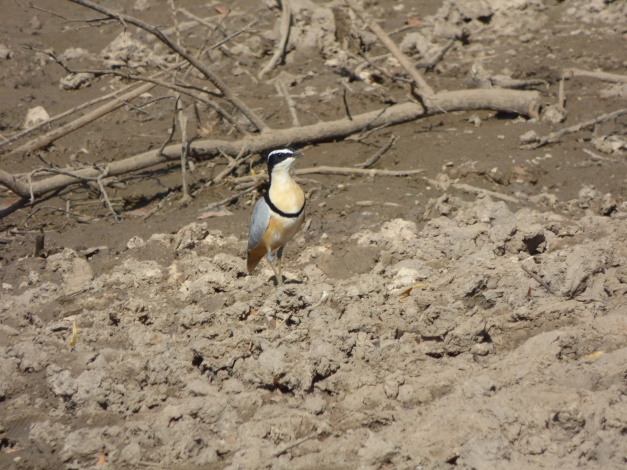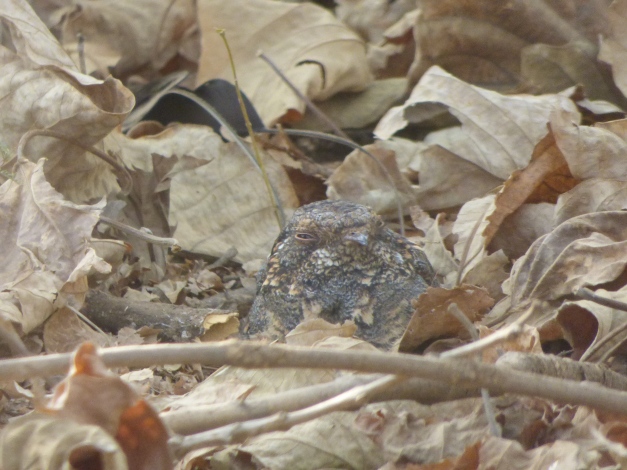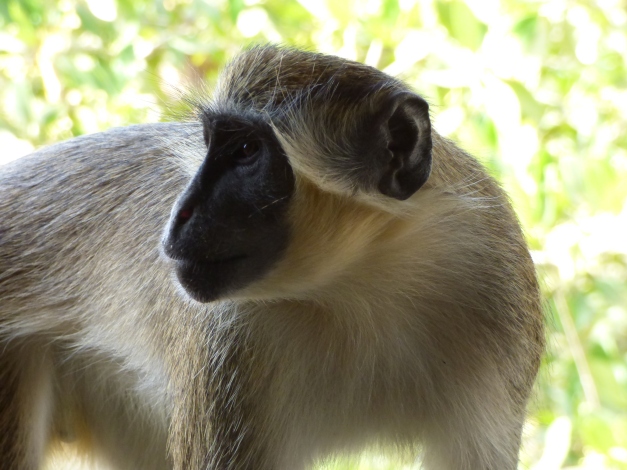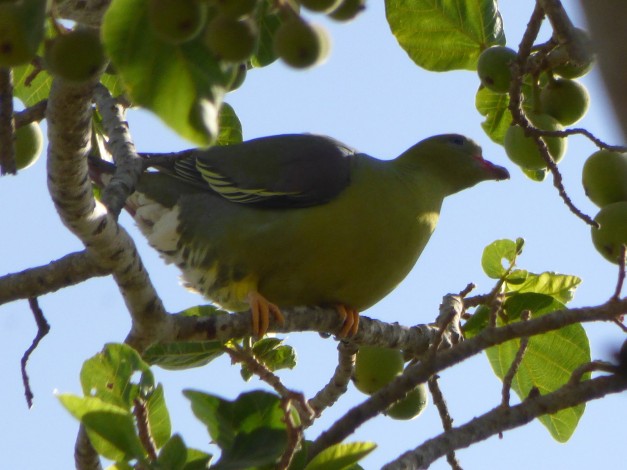The Gambia Tour January 2019 Trip Report
Dates: 15th to 22nd January, 2019
Tour participants: 7
Seen bird species: 243
Day 1. We wake up on 16th January at our accommodation by the Gambian coastline. We just arrived the day before in an evening flight from Barcelona, where the tour participants had being assembling during the day from different countries.
Our first morning in The Gambia, and as the whole tour, was sunny and calm so we headed to the restaurant of the hotel for a good breakfast. While enjoying the coffee, we also had firsts contacts with some common birds in the area.
Yellow-billed Kites were ovicous in the sky along with Pied Crows. Speckled Pigeons were spotted in the roofs around and some Hooded Vultures were overflying the hotel grounds. Western Cattle Egrets were taking an eye to our tables and at some point they looked like seriously considerin to join us for breakfast… Flocks of Village Weavers were passing along with some Purple Glossy Starlings. The surprise of the morning came along with our second coffee in the form of 3 Royal Terns. A good surprise to get in the terrace of the hotel.
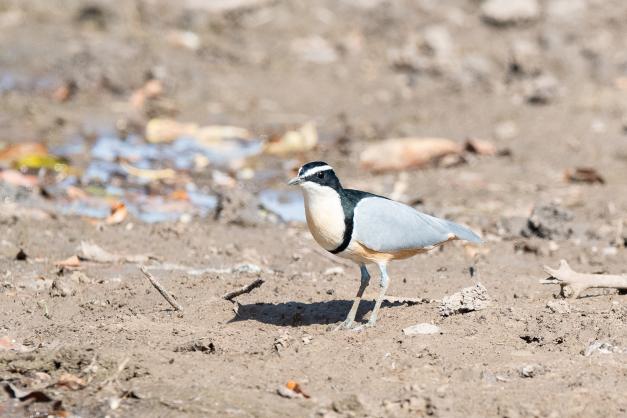
After breakfast we moved to the nearby Kotu Bridge. This is one of the main spots in coastal Gambia as it combines mangroves nicely preserved with paddy fields and scrubs. From the bridge we easily went on some common species: Pied Kingfishers were all around along with Long-tailed Cormorants and Pink-backed Pelicans. Several Western Reef Egrets were fishing in the shores along with some Squacco & Grey Herons and a single Great White Egret. In the muddy areas we spotted a flock of 20+ Common Ringed Plovers and 4 Little Ringed Plovers. Spur-winged Plovers were all over, calling and chasing each other. Around the bridge we found a obliging Broad-billed Roller and everybody in the group enjoyed excellent views in wonderful morning light. In the bush around we also had good views on the active Beautiful Sunbirds, including 2 wonderful mails, few inmature males and several female type birds. A proper scanning in the mangroves rapidly produced 1 Striated Heron down the river, joined by 1 Squacco and some wonderful Black Herons, some of them in the darkest area of the river banks.
Up in the sky there were Hooded Vultures and Yellow-billed Kites along with African Palm Swifts. A fast scanning produced also 2 Mottled Spinetails, a rather scarce bird in the area, and some Wire-tailed Swallows that happenned to come to the bridge, where they came down to stop in the wires around.
The bush land around the bridge kept producing good birds: Blackcap Babblers were seen flying over and 2 Long-tailed Glossy Starlings showed in glorious morning light. A pair of minutes after 1 Golden-tailed Woodpecker came out showing in some nearby branches. This was a quite celebrated bird as it was the first important target in the trip to appear. But the bird festival was not out, of course.
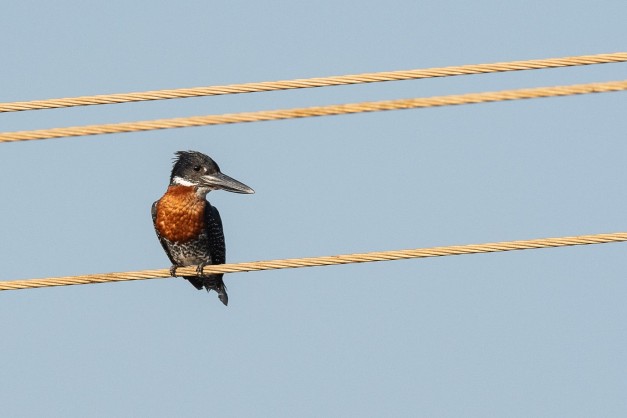
A further scanning in the mangroves revealed 30+ Senegal Thick-knees roosting in the shade. Also 2 Malachite Kingfishers were pointed out. It was coming up a wonderful morning and was only to improve as the scanning from the bridge revealed 1 male Subalpine Warbler and close views on African Darter. One of the tour participants listened a Eurasian Reed Warbler so we came to try to have good views in the bird. This was a nice decision as we got the Reed Warbler but also a showy Northern Puffback male scattering inside the bush and finally crossing the small road with a short flight. Lovely views.
We started to scan beyond but before we even got any bird with the scope we had 2 Giant Kingfishers flying over our heads and heading the scrubs beyond the bridge. These massive Kingfishers can be difficult to spot but we were lucky enough to enjoy them for long, as one of the individuals came back to one of the wires of the bridge for a while. At this time we also got 2 stunning Blue-breasted Kingfishers coming out of the mangroves to stop in a low post inside the water, just by the bridge.
Scanning up the river we still got excellent views on Western Grey Plantain-Eater and African Grey Hornbills.
It was time to move and enjoy a walk in the paddy fields but we were again retained in the bridge. This time was a second male Subalpine Warbler showing well in the ranked vegetation and a small group of Red-chested Swallows that arrived to feed around.
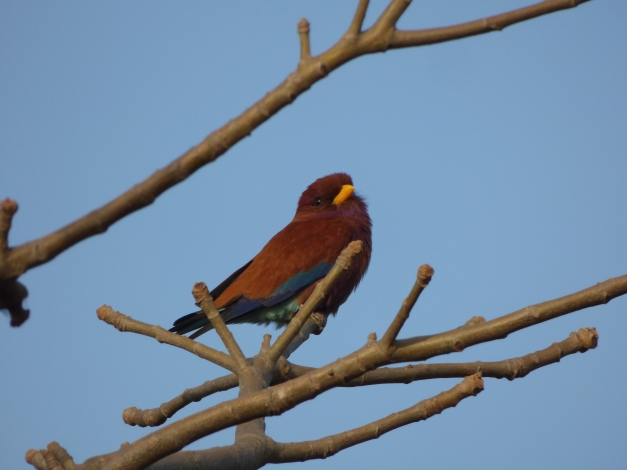
We finally got to move from the bridge and started a short walk around. We inmediatly connected with the first of many Yellow-billed Shrikes while Senegal Coucals seemed to be common around. The followed a thin path getting inside rice fields and crossing a number of small marshy areas. Squacco Heron, Sedge Warbler, Reed Warbler, Yellow Wagtail and Wood Sandpiper we all seen at this point. The place is known as a good spot for Little Bittern. Unfortunately we were uncapable to enjoy any of them. Flocks of Bronze Manninkins were flying around and we soon found ourselves enyoing Little Bee-eaters. They offered wonderful views when stopped in the low branches, sometimes few inches from the ground. The dense scrubland around is good for a variety of birds and we enjoyed more Manninkins, Red-billed Firechin, 2 Little Weavers, 1 Black-headed Weaver building a nest and 1 male Splendid Sunbird. A Common Whitethroat female came out of the dense vegetation and offered good but short views to most tour participants.

Up in the air there were small parties of African Palm Swifts. The air was starting to be worm so more birds of prey were moving. They were all Hooded Vulture, Yellow-billed Kites and 1-2 Black Kites but we also got a Red-necked Falcon that gentlenly perched on the top of a tree, allowing excellent views in the scope. In our way back to the main road 2 African Spoonbills showed up in the sky.
Now we headed to a nearby pond while surrounded by Yellow-billed Shrikes, Senegal Coucals and Blue-checkeed Bee-eaters. Soon after a bright blue flash came from a palm tree and turned out in being a Blue-bellied Roller. This bird was particularly celebrated by the group and we kept enjoying it for some minutes. Belong the palm tree there were some scrubs and here we found out up to 4 Tawny-flanked Prinias that also performed really well.
We just kept going, enjoying Blue-cheeked Bee-eaters and Beautiful Sunbirds. Our next stop was a little pond near Kotu Bridge but before arriving we found a Lizzard Buzzard perched in our way. 2 African Pied Hornbills were trying to disturb it from that place, and they got it! The pond itself restulted a bit disapointed: 3-4 African Jacanas were in the shore but, out of this, we only got Greenshanks, Green Sandpiper and 2 Eurasian Moorhens (the only ones in the tour).
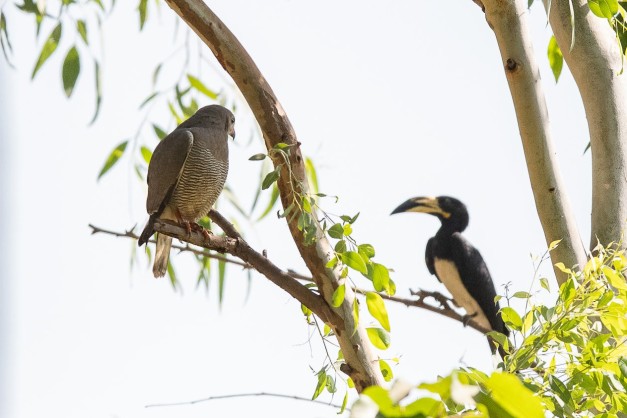
Our way back was equally as productive as the way in. A Green Wood-Hopooe appeared in the wire around, allowing some excellent shots. Along with this bird we got a flock of 4 White-billed Buffalo-Weavers. But the most celebrated bird at this point was a pair of Pearl-spotted Owlets found by the path. These small owls, with close relatives in both North America and Europe, were one of the main attractions of the day! Around them, several Senegal Coucals were visible, Blue-bellied Rollers were still up in the palm trees and a delicate Fork-tailed Drongo was scanning the sky from a bush. But probably the most interesting bird of the way back was a lovely Grey-backed Camaroptera showing in excellent way really low in a bush and also moving on the ground while collecting nesting material. All members in the group enjoyed very much (as I did myself) with this wonderful bird and such a good views!
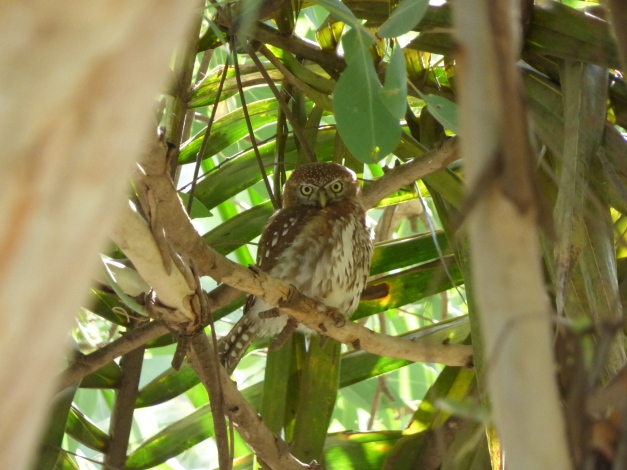
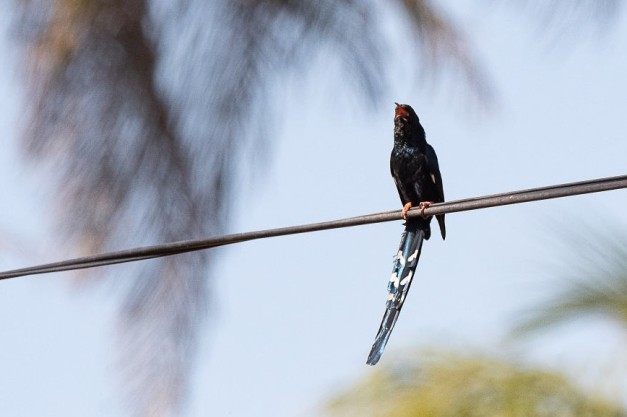
Back in Toku Bridge we just went to the nearby water point, kept by the Gambian Bird Association staff. This tiny water pond attracks good numbers of birds and it is a really productive. In 15 minutes of wait in the shade we got Vinaceous Dove, Red-chekeed Cordon-bleu, Red-billed Firefinch, and Northern Grey Sparrow. The waiting there was even more productive as we got an Isabelline (formerly Western Olivaceous) Warbler moving in a small tree inmediatly above the pond and a Yellow-fronted Tinkerbird up in a kind of fig tree.
All the group was delighted after such a wonderful morning! But it was lunch time so we moved into a nearby restaurant by the beach. Here we enjoyed some good food and had some rest from midday heat while scanning the sea. The sea watching was more or less productive as we got some Sandwich Terns moving up and down in the coast and 2+ Pomarine Skuas chasing terns far offshore. When about to leave we got the first Lesser Crested Tern of the tour perched on a floating balloon and everybody got nice views in the scope.
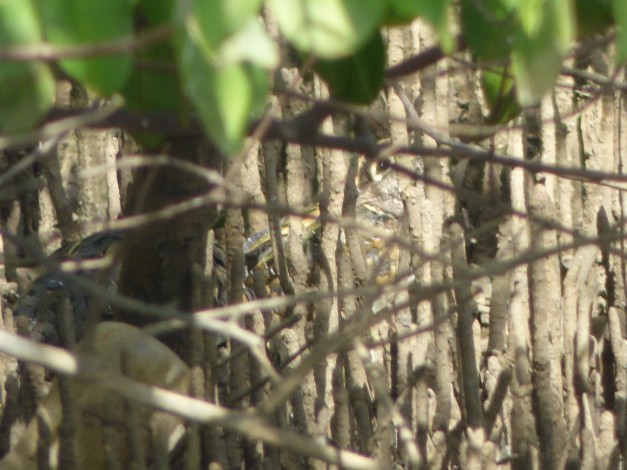
After our lunch we just headed to a new pond. The walk produced first views on the spectaculars Yellow-crowned Gonolek and Red-bellied Paradise Flycatchers along with Village Weavers and African Thrush skulking on the ground. Here we also got good views on a quite remarcable Nile Monitor feeding on some rubbish in the ground. At the pond itself, we scanned hard looking for our main target and we soon could enjoy good views on 3 male Greater Painted Snipes in the scope! They were really hard to see but we were lucky enough as one of them just moved a bit and we catched this movement. A severe scanning of the bank finally produced the three birds. At the same pond we also had Wood Sandpiper and Greenshank.

Just happy after such a good views on one of the main targets of the trip, we just came back to the small water point we visited earlier in the day. A different set of species were seen there: Red-cheeked Cordon-bleu, Red-billed Firefinches, Yellow-fronted Canary but also White-crowned Robin Chat! A final walk into the palm trees groves produced excellent views on Beautiful Sunbirds as well as the first sight on Senegal Parrot, a wonderful way to end the day.
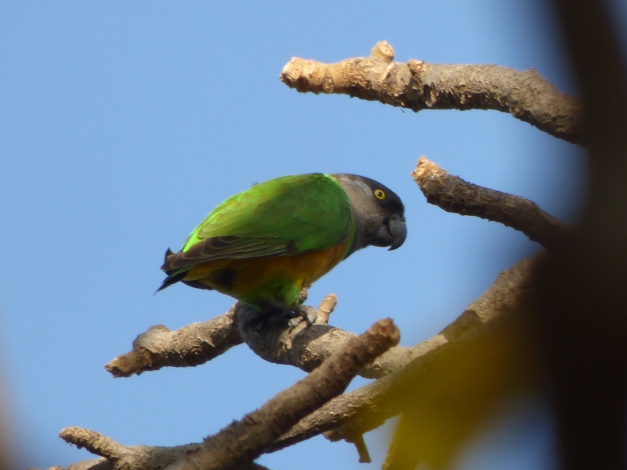
After such a great day we just came back to our accommodation for a great dinner and wonderful rest!
Day 2. This day we just headed North from our accommodation, arriving as far as the Northern border with Senegal. Our fist stop was at Kartong Mining Area. This is a former grave mining place, now closed and hosting a great birdlife. Just arrived we started enjoying good birds. Flocks of Piapiacs and Long-tailed Glossy Starlings seemed to be everywhere around, joined by Purple Glossy Starlings. Here we also got or first group of Callythrix Monkeys, a recent split from Grey Monkey. A first scanning around produced up to 3 Senegal Coucals, a common view in this location, as well as several Western Grey Plantain-eaters, Beautiful Sunbirds and 1 stunning Abyssian Roller perched on a fence. A White Wagtail passed by and stoped close by our van. This was moment that a Rufous-crowned Roller just punched the Abyssian Roller from its post! A walk around the area produced Tawny-flanked Prinia but also a Fine-spotted Woodpecker, both Greater and Lesser Blue-eared Glossy Starlings, Isabelline Warbler, 2 Zitting Cisticolas, 2 Black-rumped Waxbills and Woodchat Shrike. The water level in the whole area was really low and bird activity, limited.
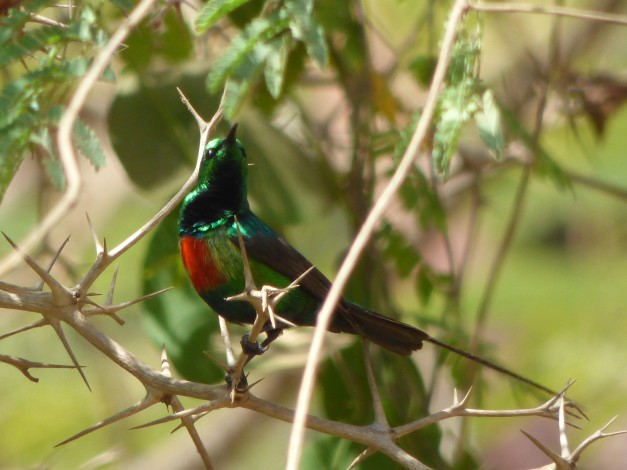
Scanning a second pond we had some African Jacanas, Malachite Kingfisher and 1 African Swamphen (the only one of the tour!) feeding out of the vegetation in a muddy area. Happy with this nice spot we all kept scanning around while taking a look to the skyes. It was already 10:30 and quite warm so it was a nice moment for raptors to move. As always, several Yellow-billed Kites and Hooded Vultures were seen soaring or circling in the sky but a proper scanning of the tree line in the distance revealed a mínimum of 3 Palm-nut Vultures, all of them wonderful adults.
This is a very special bird of prey spending most of the time in forest and palm-tree areas, where they look for palm-nut fruits, the base of their diet. They also scavenger, especially along water bodies and eventually predate on a long list of small animals, from invertebrates to young birds.
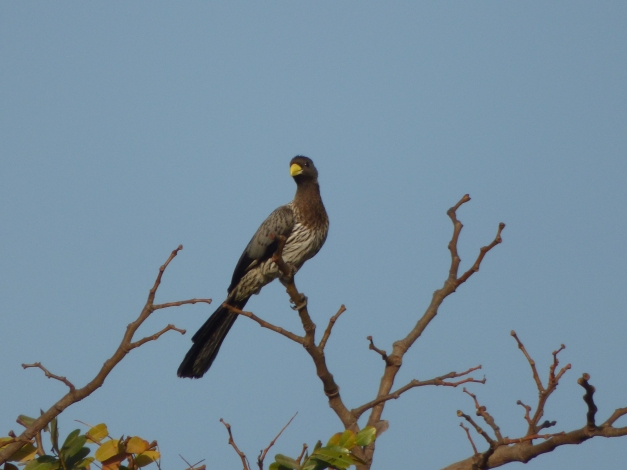
The views on the bird were great, although a bit distant. We also enjoyed two of them flying around and showing their wonderful plumage. While enjoying this raptors I listened both Black-crowned Tchagra and Sulphur-breasted Bush-Shrike singing from the far tall thickets, about 300 metres away. Despite our efforts to locate these birds, it was impossible to find out. Our effort was conpensated by a Grey Kestrel that kindly came to stop in a nearby palm tree. All the group enjoyed great views on this bird!
We still spent some time scanning a pair more of pools but with really poor results so we decided to move on and take a look to the nearby beach in search of some major targets. Once parked by the beach we all walked down to the shore, ready for a shortwalk along the beach. A first scanning easily produced several Sanderlings, 2 Eurasian Whimbrel, Ruddy Turnstones and 1 Grey Plover. The sky was full of terns moving up and down. As we walked North it was easy to find out Sancwich’s & Caspian Terns. Small flocks of Grey-headed Gulls were visible roosting on small rocks in the ocean or flying overs. We were fast in locate the first of many Lesser Crested Terns as well as several Caspians. We kept moving North with the wonderful blue of the sky and ocean as an unforgettable frame until we arrived to an area where the beach comes wider. A small scanning easily reveleaded 1 adult White-fronted Plover along with 3 Kentish Plovers. We all enjoyed great views on the tiny plover while moving on the beach. Again scanning the sea we got a female Western Marsh Harrier and the first small flock of Royal Terns moving along with other terns. We counted not less than 17 of them! A good number of birds where moving North in the bay. A Little Tern flying along with some Sandwich’s and Caspians. About 45 Pink-backed Pelicans where resting on the beach and the sea and then is when one of the local bird guides came to us to advice us on a group of Bee-eaters flying above the scrubland beyond the beach.

I think I was not the only one to missunderstand “Common Bee-eater” so I thought they were having a small flock of European Bee-eaters. Good spot but I personally kept concentrated in a far flock of gulls including some Audouin’s Gulls and other beauties. The surprise turned out when the “Common Bee-eaters” turned on to be Northern Carmine Bee-eaters so I fastly adviced the guys and moved inside the bushland. Everybody followed us and all the group was enjoying these wonderful birds in a pair of minutes. There were 5 of them, catching insects with fast flights from the thin branches of a 4 metres tall dead tree, A small partie of Blue-checkeed Bee-eaters were moving alongside and allowed excellent comparatives of such incredible species.
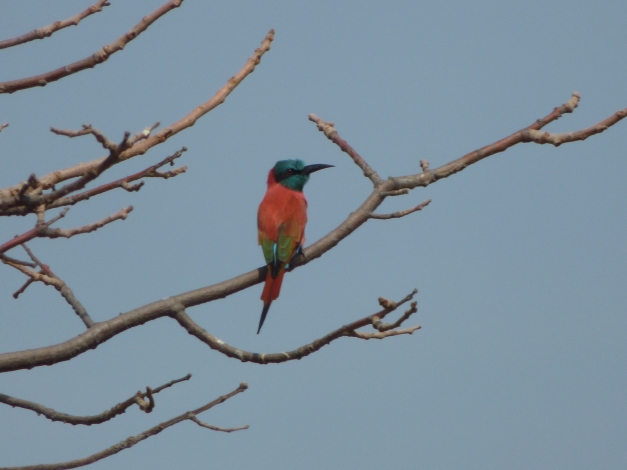

Photographers were specially delighted with the views on these species of Bee-eaters and we spend enough time to scan around in a proper way. A good number of Pink-backed Pelicans were resting on the beach and we had good views on them and also a in some Hooded Vultures nearby. A Common Sanpiper, Eurasian Whimbrels and 2 Grey Plovers were around in the small ponds of the tiny estuary but probably the best bird were a pair of Senegal Eremomela moving quite fast in the dense vegetation.
After such as good spot it was time to head back to our van. It was already quite hot and the flock of gulls was not any more in the beach. Still, the walk back provided us with really good views on a juvenile White-fronted Plover and on a small flock of Mosque Swallows that were chasing insects above the scrubs.
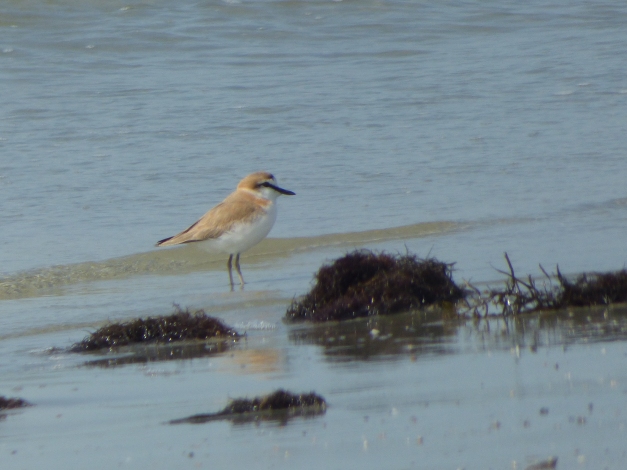
Once arrived by our we still had time to enjoy a good refreshment. Natural orange juice or some soda before going to our restaurant for lunch! But even in this resting time we got our small piece of good bird since 1 Tawny Eagle was spotted at the beach. Unfortunably the bird just flew off but we still had good views on the bird flying away from us. It turned to be the only one of this species along the trip… Amazed after this lucky encounteer we just finish our drinks and drove for about 20 minutes until a small and lovely restaurant by the river that works as Southern Gambian border. Here we enjoyed the best fish (and probably the best meal) of the trip while having some good birds. At the opposite bank of the river was Senegal so those (me included) working on list per countries were delighted with this!
So, in the Senegalese side of the river we enjoyed 2 Bar-tailed Godwits that were also new for the trip. There were several Pied Kingfishers, Western Reef Egrets, Great White Egrets and 1 Eurasian Oystercatcher (the only one of the trip!). A pair of other good surprises appeared as we spotted 1 Great White Pelican and a really distant Goliath Heron (this one in the Gambian side) walking along the shore.
Western Ospreys were extremelly active at the site and we had several wonderful views in two adults performing and calling around. After lunch we just sat by the river, in a good shade and scan around. 1 Slender-billed Gull appeared in the river (not sure what side) and a small flock of Gull-billed Terns were a non-top show up and down the river. Also Common Ringed Plovers, Spur-winged Plovers and the closest views on an Eurasian Whimbrel I have ever had! From were I was I could listen a call up the trees, behind our position so I went for a small walk and found 1 Isabelline Warbler (formerly Western Olivaceous Warbler) moving up in the riverside vegetation. A second bird moved along with and after some minutes the bird was finally showing well; it was a Brown Sunbird! A fast call and the whole group joined to have an excellent sight on the bird preening and standing for long. And then we realised there were two Brown Sunbirds and not only one.
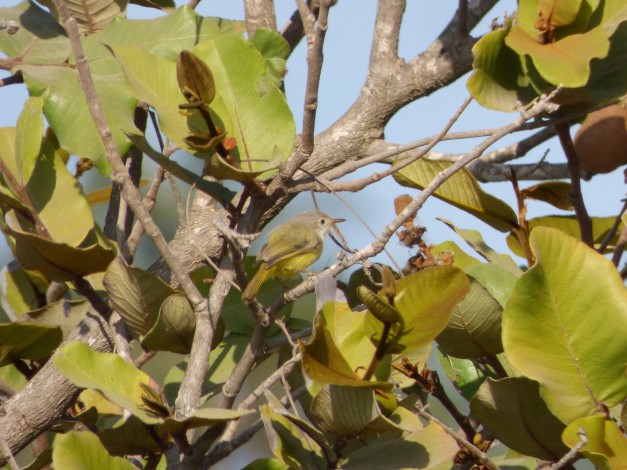
We left the area really happy after such a good combination of good birds and excellent food. Our next stop was in Tanji Beach. Here we decicated a good walk around the coastal scrub looking for Four-banded Sandgrouses. Unfortunately and despite our efforts we could not find any of them… Still, the area was really rich in birdlife. Senegal Eremomelas looked like being everywhere, including a good flock of 11+ moving in the scrubs. Common Nightingales were calling in the dense thickets but we never got any view on them. One of the first birds in the area was our first Violet Turaco of the trip, that kept moving agaisnt the sun all the time! Black-billed Wood-Doves were also common and got several of them being flushed while looking for Sandgrouses. In the middle of our search a fig tree kept being full of birds, including two wonderful Bearded Barbets moving along with Common Bulbuls (local race called now Upper Guinea Bulbul). It is always a pleasure to enjoy such a wonderful birds!
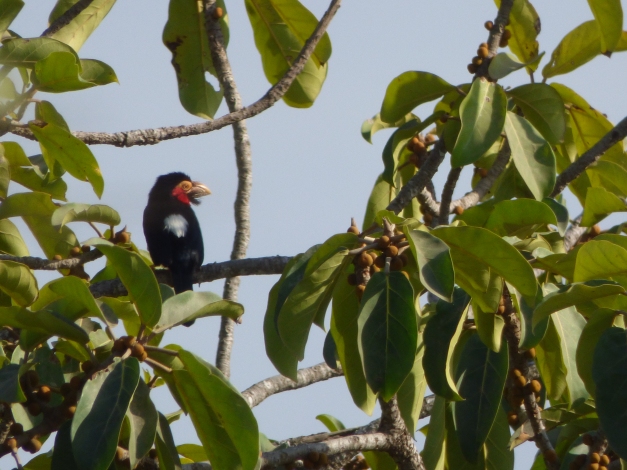
The area was also rich in finches, allowing excellent views on Red-billed Firefinches but also in Red-cheeked Cordon-bleu and Orange-cheeked Waxbills. A mixed flock of both species along with Bronze Manninquins was one of the hits of this afternoon. Back to the van we just drove back to the esturary were we scanned the flock of gulls looking for something special. Unfortunately we only got a pair of Black-headed Gull amongst several Grey-headeds’. It was a bit late in the afternoon and some fishermen were coming back to the beach. The Tanji fish market was waiting for them and the treasures they were bringing from the Ocean. It was an excellent decision because we enjoyed very much with the activity and the colours of the fish market but also because many gulls were attackted to the fish market, including 2+ Kept Gulls. We had really good views on the birds and a good comparative with a 1st winter Lesser Black-backed Gull. Well, don’t forget we got our first flock of House Sparrow of the trip!!!
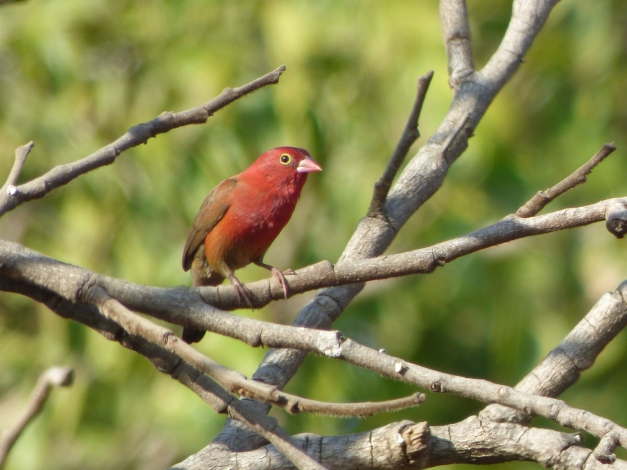

Happy with this rather last minute addings we came back to our hotel for a good rest and dinner.
Day 3. This day we were going the explore inland Gambia. Despite we didn’t check out of our coastal hotel we were not coming back to sleep there but going to Tendaba Camp, probably the best option to explore inland Gambia while avoiding long transfers. Well, the planning of the day was a bit difficult. Due to the drought most of the Egyptian Plovers were already back far inland or in Senegal but we were still having chances in a small pond at the Northern bank of the country. So we left our accommodation and headed to the main ferry crossing the Gambia River near Banjul. Unfortunately that day it was a meeting between Senegalese and Gambian PM so the ferry was overbooked! The result of this was a long, long wait first to get the tickets and then to cross River Gambia.
In our way to the ferry we had far away views on a flock of Greater Flamingoes and we passed by one of the only 2 Black-headed Herons of the tour.
During our wait we enjoyed views on some Cape (Kept) Gulls in the decks along with absolutely wonderful views on Pomarine Skuas (at least 11 of them!!!) chasing gulls and terns (mostly Lesser Crested Terns) by the beach, many times passing over the fishermen in the beach itself. We enjoyed very much these views but probably not enough to forget about the four hours long wait… To see these Skuas chasing all those terns and stopping right by the beach or on the sea was one of the most unexpected sights for many of our clients, and very appreciated!
Once at the Northern bank we drove up the river and after some miles we did our first stop. The first Dark-Chanting Goshawk was up in a pylon so enough reason to stop and take a look. At the same place we had some Namaqua Doves flying around, a common view in Tendaba area. Another road stop allowed us to connect with the first 4 Black-headed Lapwings of the trip. We kept driving a bit more and got “typical” road birding such as Brown Snake Eagle and Gabar Goshawk.

A fast stop at Kaur produced flocks of thousands of Red-billed Queleas flying into the reeds that were dramatically chased by a Lanner Falcon. Squacco Heron, Wood Sandpiper and Pied Kingfisher were also showing nicely. Soaring above the reeds and the floodplains we also got 2 Montagu’s Harriers (juvenile and male) and 1 Western Marsh Harrier. Before our main destination we still had another road stop, this time for 4 Black-headed Lapwings posing by the road.
We finally arrived to the small pond where we were specting to have our target. We all jumped out of the car and inmediatly were enjoyed walk-away views on 1 Egyptian Plover!!! It was worth the extra effort, after all! The bird was moving in the shore along with other waders (Common Sandpiper, Spur-winged Plover, Green Sandpiper) and was extremelly tame, allowing all member in the group to enjoy suberp views and not worst images. It was also incredible to see the behaviour of the bird, a mixture between a Plover and a Stone Curlew…
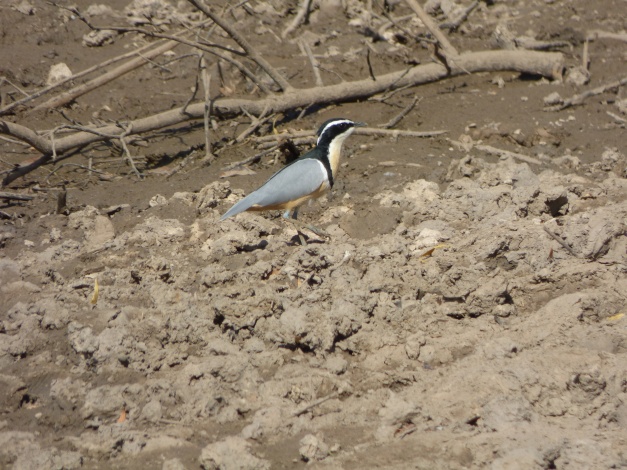
The pond itself was really rich in birdlife. While we were approaching the Plover we had 2 Pale Flycatchers moving low in the rank vegetation. A really short walk around allowed some excellent and unexpected specialities. 1 Brown Snake Eagle showed really well and the dead branched os a pair of trees were a true magnet for a good number of species. 2 Bearded Barbets were showing well, promptly replaced by 2 African Collared Doves! The largest tree was the most interesting small birds (mostly finches) were all the time moving around. A small group of 10+ Cut-throat Finches was moving around, also Red-billed Queleas and Red-billed Firefinches. 3 Exclamatory Paradise Whydahs showed up in the trees, 2 of them showing full lenght tails!! This was a very celebrated bird in the group. Finches were coming and going. A flock of 3 Northern Grey Sparrows came in but something smaller, rather yellowish appeared along with them; it was a female Sudan Golden Sparrow!! Wow, this was quite unexpected and an excellent bird to see, really! Next flock came in, this time lovely Namaquas Doves that were moved by 2 Long-tailed Glossy Starlings. It took a pair of minutes the finches to came back, this time more Cut-throat Finches than before but this time along with 3 White-backed Seedeaters.
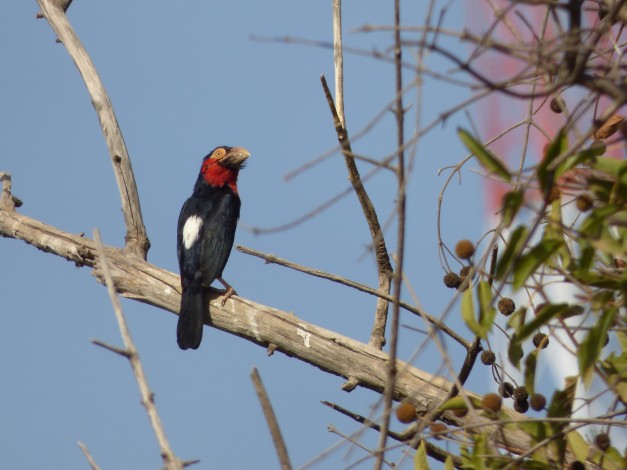
This was a great spot and I’m just looking forward coming back there next year! But it was time to move. Time to go back to the Southern bank of Gambia. This time the ferry near Tendaba was fast and still allowed us a final stop in the savannah before going to our accommodation. Dark-Chanting Goshawk was showing again superbly so we did a random stop, trying to find something else. I we did it. Nearby it was a small flock of 3 African Wattled Lapwings moving in the semi-arid contryside. Not easy to see and took us some time until everybody in the group enjoyed good views on them. Before going back to our van, 2 Bruce Green Pigeons flew over allowing fast but intense views on these magnificient birds.
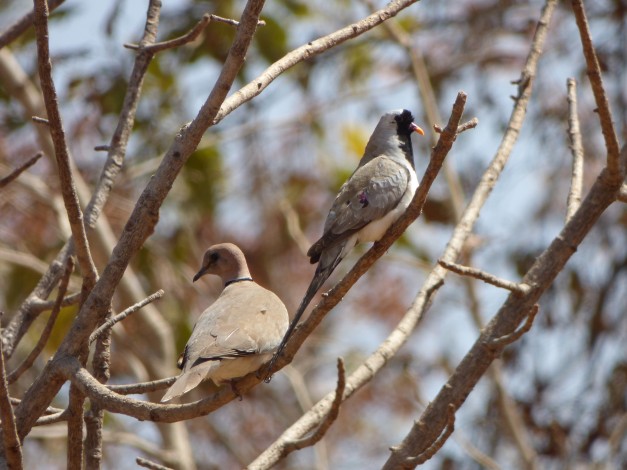
By the time we arrived to Tendaba it was almost dark but we were happy after enjoying excellent views on the Egyptian Plover and other great birds!
Day 4. Early morning start this time to enjoy the mangroves by Tendaba Camp. The mangroves are part of the large Kiang National Park. Here we enjoyed wonderful views on Western Reef Egret, Striolated Heron, Blue-breasted Kingfisher, African Fish Eagle, African Cormorant (lucida race of Great Cormorant), White-throated Bee-eaters, Wahlberg’s Eagle, Collared Sunbird, hundreds of African Darters and the only one Purple Heron of the trip. The boat trip goes in a laberinth of channels penetrating in the mangroves and it is wonderful way to explore such a incredible habitat.
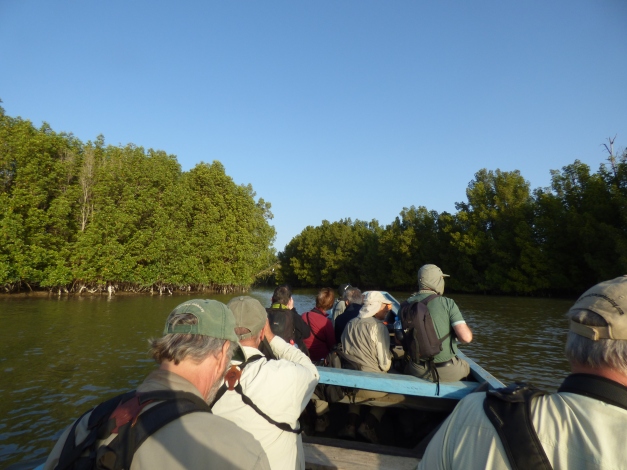
A quite hard scan was necessary to discover some of the White-backed Night Herons roosting in the mangroves but after some minutes everybody in the little boat got great views and some shots in the birds. We counted 4 birds in different spots, a number quite low if comparin with other times. Soon before living the mangroves we listened 1 African Blue Flycatcher so we stopped, scanned trying to find out the bird. Unfortunately it was no way and better views on the bird were relicted to a flash of a shadow moving up in the canopy. Back to the river we experienced how strong the wind was. The river at this point is about 1 quilometer wide so it can take some time to cross. It was quite hot and a pair of waves brought a kind of not very wellcome refreshment to some of the tour participants. Fortunalety was only a pair of times and we came back fast to Tendaba, where went to enjoy a walk around.
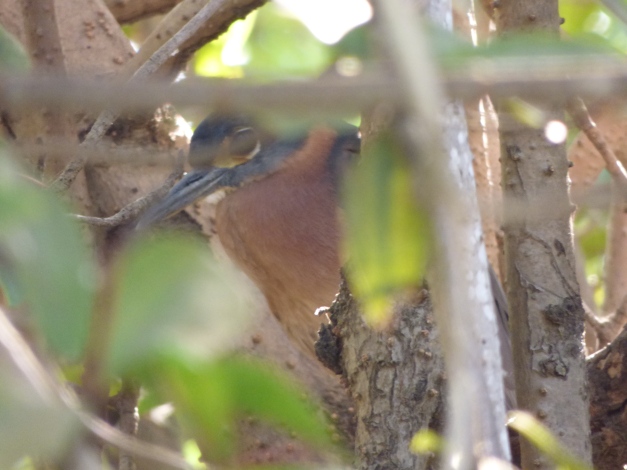
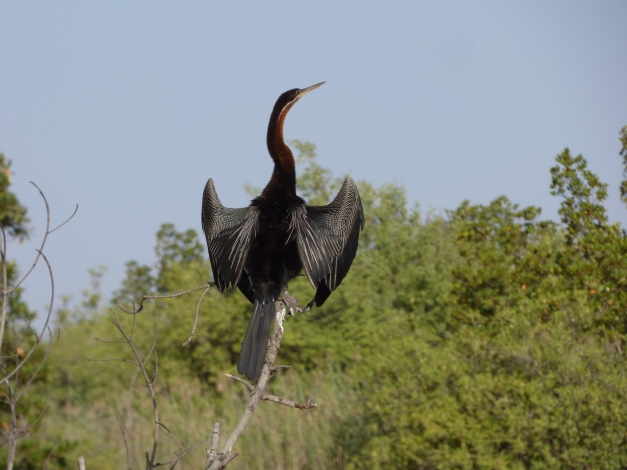
The hill beyond Tendaba Camp can be quite good for birding. Despite being quite windy we still had lovely views on Abyssinian Roller, Pygmy Sunbird (male and female), Beautiful Sunbird and European Bee-eaters. A pond equiped with a small hide provided excellent views on both Namaqua Doves and several Black-billeds Wood-Doves. Here we also had Red-billed Queleas, Northern Red Bishop, Black-rumped Waxbills, Red-chekeed Cordon-Bleus, 2 Bush Petronias and Northern Grey Sparrows.
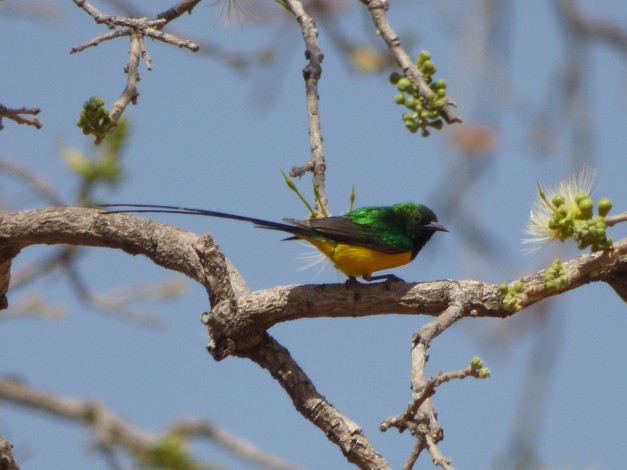
It was quite midday and time to move on. Our next stop was the famous Raptor Bridge, where we stopped for a pic-nic. Here we enjoyed the best raptor action of the trip. Just arrived we had a good troop of Hooded Vultures and Yellow-billed Kites moving over. Also 4+ Rüppell’s Vultures, 10+ White-backed Vultures and 2 Eurasian Griffons were flying over. 3 African Harrier Hawks were also well visible, including 1 juvenile. One pair of Grasshoper Buzzards was also appearing two or three times in the sky. The tree that was offering us its shade had 1 Isabelline Warbler and close to the bridge it was also 1 Black-headed Heron, Squacco Heron, Intermediate Egret and 1 White Stork (!). White Stork is a commonview on passage but really scarce in winter time in The Gambia so always a really good bird to see!! We kept scanning for raptors. Our efforts were compensated with a Wahlberg’s Eagle showing well as well as with 1 Palm-nut Vulture cincling along with White-backeds’.
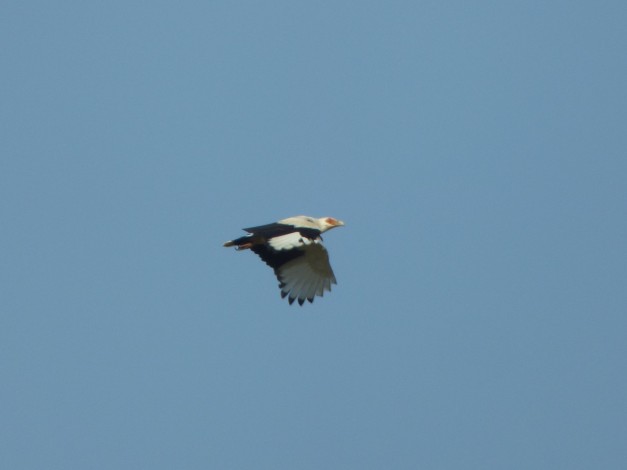
After our canned pícnic we moved to our last stop of the day, to visit a small patch of untouched native forest. The walk around was really good and produced good views on Swallow-tailed Bee-eaters, a juvenile Greater Honeyguide, Fine-spotted Woodpecker, ruff views on Double-spurred Francolin (one of our client got moret han ruff views), Blue-spotted Wood-Doves, Western Bonelli’s Warbler and wonderful Green-headed Sunbirds attending a small pond.
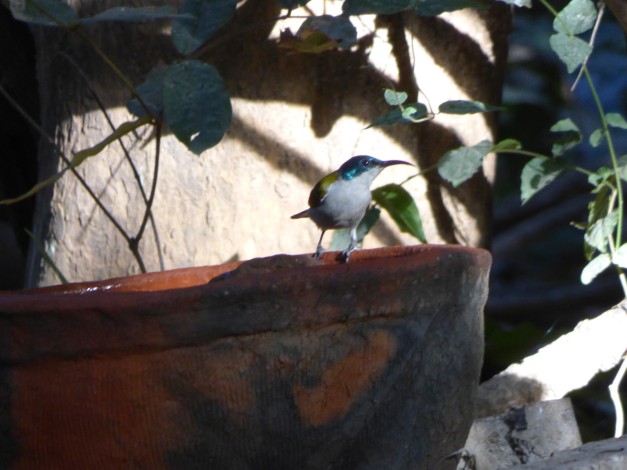
But these wonderful birds were not the real reason of our visit. When arrived a local guide was waiting for us. The first bird he showed us was a pair of Greyish Eagle Owl roosting low in a tree. 5 minutes more of walk were mandatory to arrive to our next target, and we got excellent views. Both female and male Standard-winged Nightjars gave us amazing views, the male showing the penants in the wings…Unforgettable! Last stop, deep in the forest, allowed us to enjoy 1 African Wood Owl up in the trees. Wow, a think these were the best 90 minutes of the tour for some of our clients!!
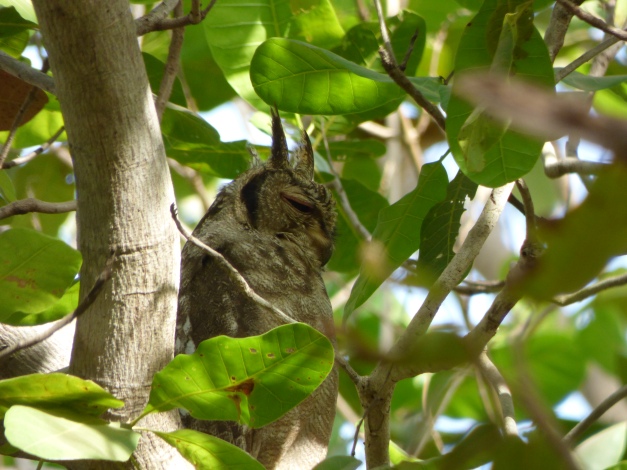


After this wonderful last stop we just headed back to our hotel, where we had a wonderful extra long shower and also extra long dinner!
Day 5. In a new sunny and lovely day we directly went to the famous Abuco Natural Reserve. Several good birds to be discovered. A first scanning from one of the view points allowed to see Broad-billed Roller, Osprey (extremelly close), Giant Kingfisher (even closer), Squacco Heron, African Darter, African Grey Woodpecker, Black-necked Weaver and Heuglin’s Masked Weaver. The place was having a good activity and didn’t take long until one of the tour participants talk about a dark-and-reddish bird skulking on the ground…A fast scan in the area produced great views on 2 Western Bluebills! The small patch of vegetation was having a good activity and we also enjoyed Little Greenbul and Black Crake. 1 juvenile African Harrier-Hawk came into the trees nearby, moving into the water the only one Nile Crocodile that we saw along the tour.
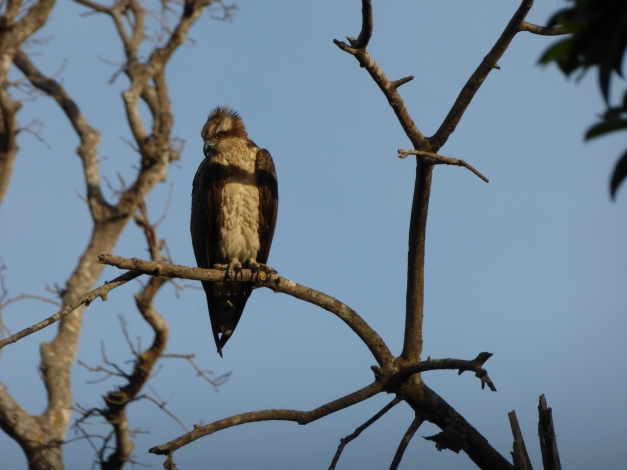
A small walk around proved to be really productive. A tiny pond rich in floating vegetation produced excellent views on a pair of Western Bluebills along with Bronze Manninkin and a gorgeous Oriole Warbler feeding really low in the vegetation. A female Common Wattle-Eyed was also moving along with the Oriole Warbler, allowing good views to all tour participants. Here we also got excellent views on both male and female Grey Woodpecker working on a tree. 1 Snowy-crowned Robin Chat was quite showy for some time, alway on the ground under dense cover. Both African Paradise and Red-bellied Paradise Flycatchers were common in the forest, many times associated with White-eyes. Our walk deep inside produced also 2 Grey-headed Bristlebills moving low in the vegetation. This is a quite shy Babbler that can be quite difficult to see. Blackcap Babblers are not that difficult but always a pleasure to enjoy. A pair of flocks gave us good views. Our walk deep in the forest brought us until a place with really big trees. Was time to scan. Not long until we got a Westen Grey Plantain-Eater flying over…and then appeared the 1st Green (now called Guinea) Turaco. First one, but then more Guinea Turacos were joining the trees. Violet Turacos came also along. The birds were looking for the fruits they typically feed on so were moving slowly in the branches or “jumping” from one branch to the next. That corner was still rich in small birds and we catch up with a nice flock of 5+ Yellow-breasted Apalis moving up in the canopies.
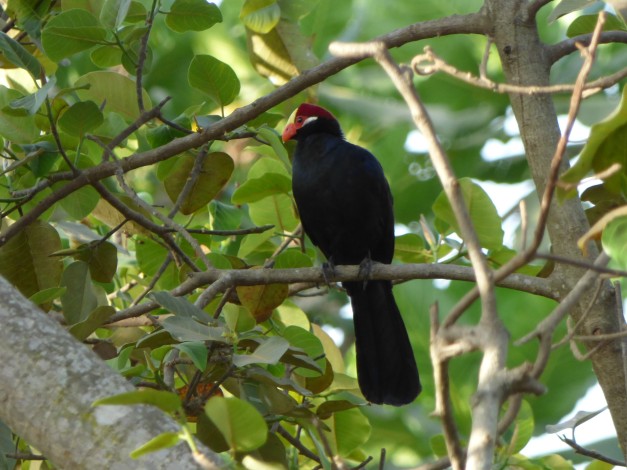
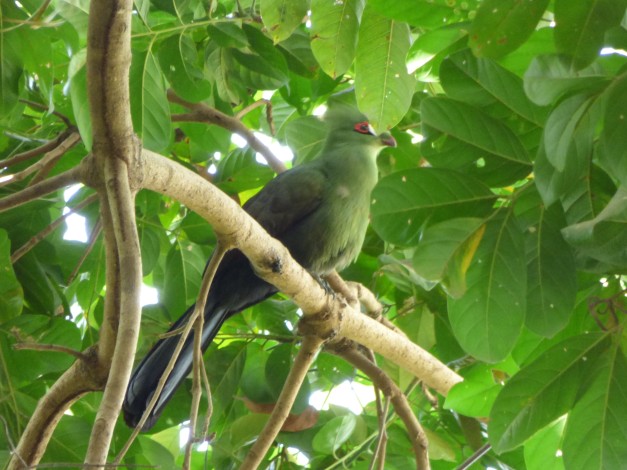
Still time for exploring a pair more of corners so we went on and find an open space with good activity. Here we enjoy great views on Swallow-tailed Bee-eaters, nice views on a Lesser Honeyguide and a small flock of Lavender Waxbills moving in and out in the low branched of a dead tree. Fanti Saw-wings were flying low in the clearing and eventually stopped by the Bee-eaters. A bit beyond we still had time check a last tree. Not less than Bearded Barbets were in the place!

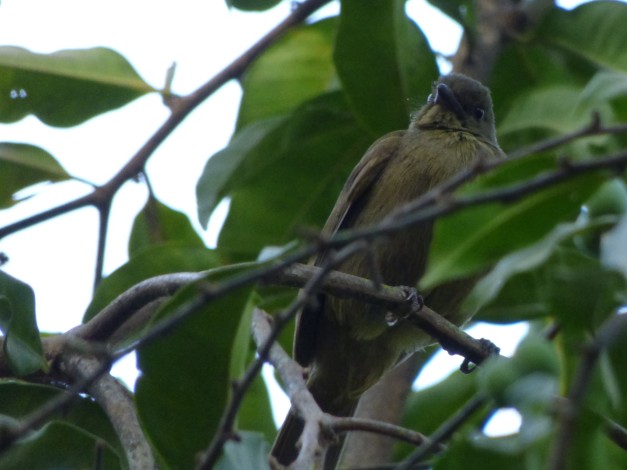

For lunch we went to the nearby mangroves, where a restaurant in the tide area offered a good selection of food and shade plus obliging Callythrix Monkey feeding on the fish and Beer (!) and, in fact, anything they could get.
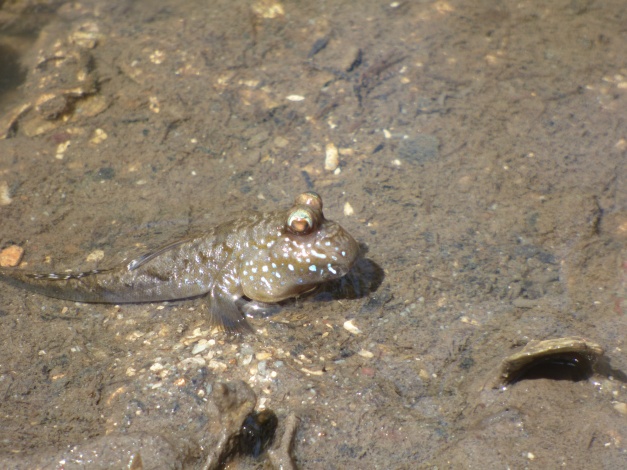
In the afternoon we went to spend some time in Brufut Reserve. Here a local guide was waiting for us to guide us into a special tree. Both Brown and Blackcap Babblers were around, Western Red-billed & African Grey Hornbills appeared and some African Thrush showed briefly in the vegetation. In the tree, a superb pair of Northern White-faced Owls. All tour participants got again wonderful views in this unique owl. Great!
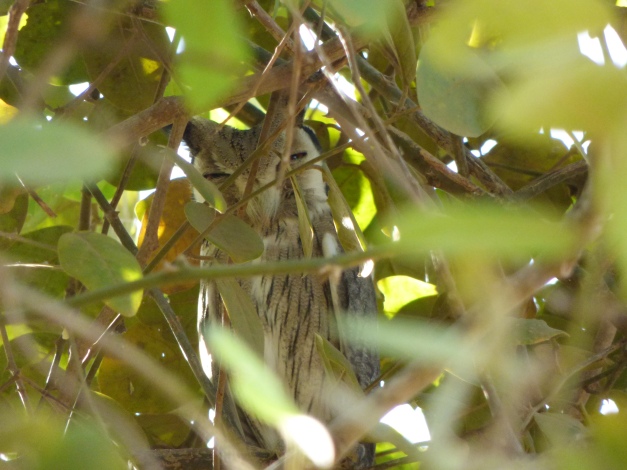
We then kept scanning around. We got ruff views on Yellow-throated Leaflove and African Pygmy Kingfisher. A Grey Woodpecker didn’t stole the show and, with a perfect light, was the main character of several shots. A short walk around brought us (again) to a huge fig tree. Several sunbirds were feeding there including Beautiful, Variable and 2 Copper Sunbirds showing typical black, rather long undertail. The tree was full of Common Bulbuls, Yellow-fronted Serins and Village Weavers but also had some Western Grey Plantain-Eaters. Finally we got really good views on 2 African Green Pigeons feeding high up in the tree.
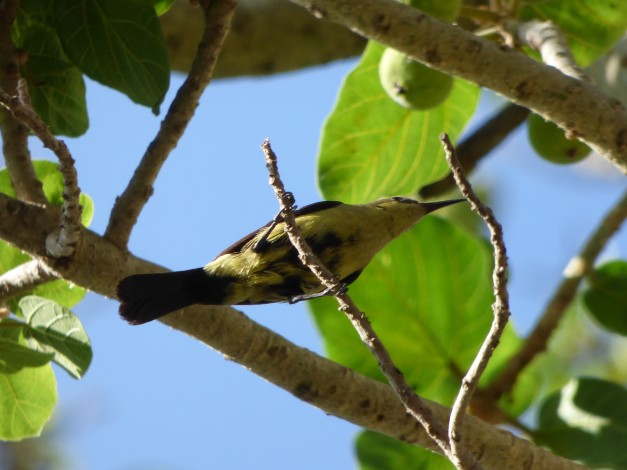
Then we had a small walk around. 1 African Golden Oriole flew over while a obliging flock of Orange-cheeked Waxbill showed up in perfect light. A juvenile Greater Honeyguide also flew over our heads. Our guide brought us to another special corner where, after some reseach, we enjoyed Long-tailed Nightjars male and female. The birds looked like quite nervous so we worked quite hard to not disturb the birds at all. I have to say that the all tour participants did really well on this, despite being a bit challenging since the female was a bit to close to the path! Still not out because a final walk produced Klaa’s Cuckoo, another Copper Sunbird and several Red-chested Swallows. At the end we just sat down by a pond. Several birds came to it. Good numbers of Blue-spotted Wood-Doves, Lavender Waxbills, African Paradise Flycatcher, Guinea Turaco, African Yellow White-eyes, Yellow-throated Leaflove, African Thrush, Little Greenbul and Eurasian Reed Warbler all came our of the dense vegetation!
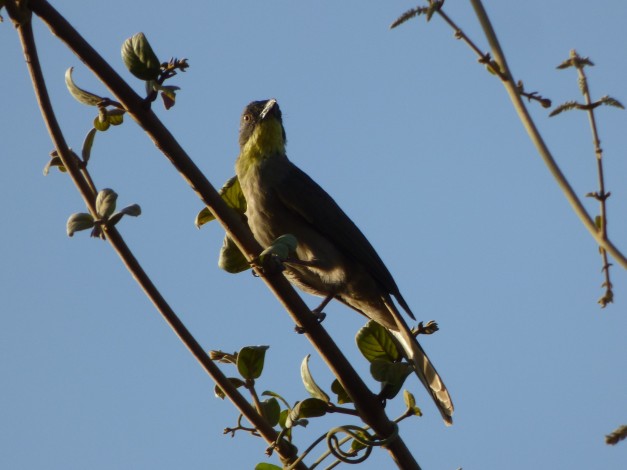
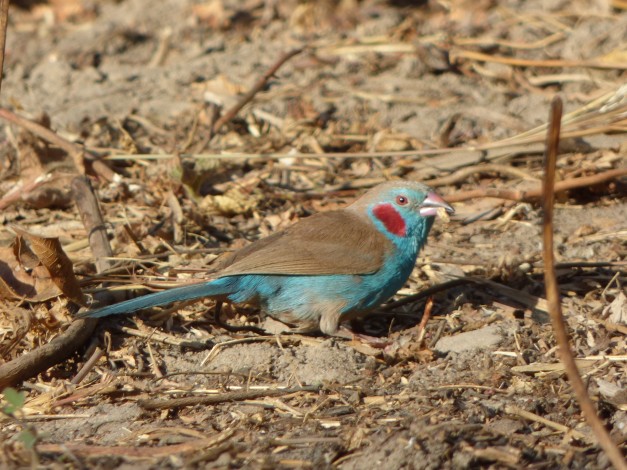
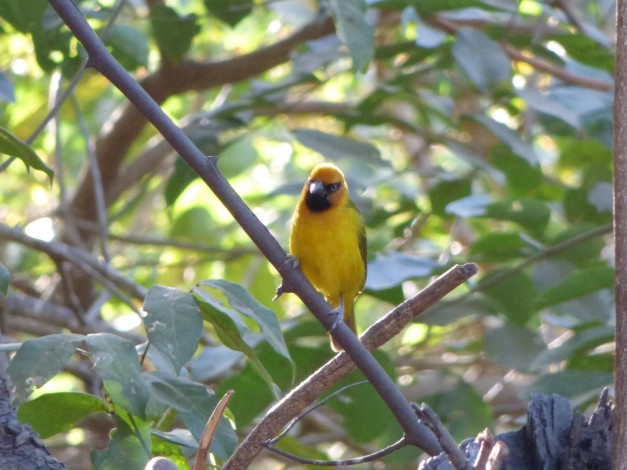
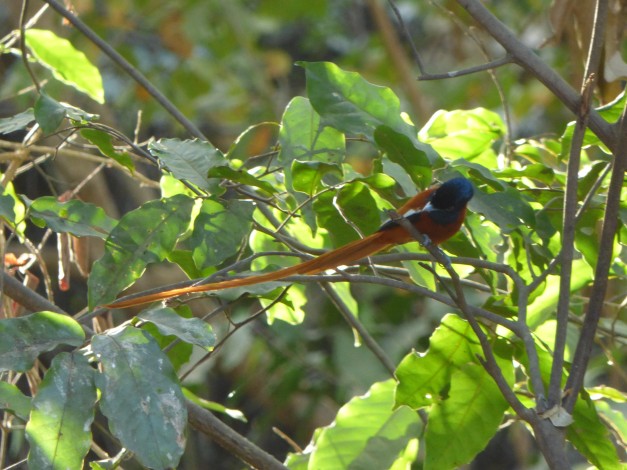
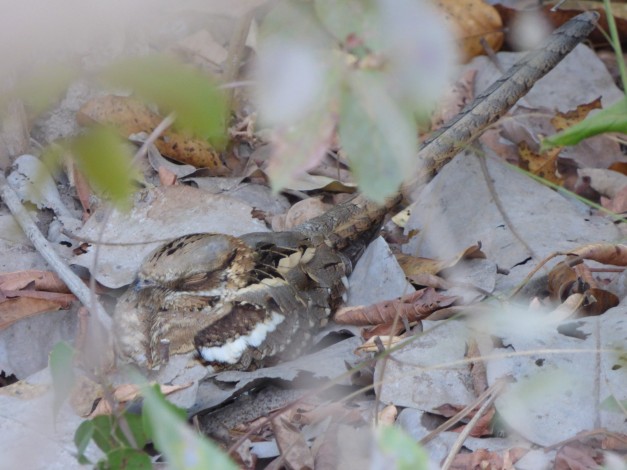
Well, happy all after such a wonderful day, we just came to our accommodation in a short transfer to enjoy the rest of the evening.
Day 6. The las full morning in the trip we went to explore Pirang National Forest. This is one main spot for the always extremely difficult White-spotted Flufftail. Best time for the bird is, probably, October-November. Despite this, we dediced to go and try (in Catalonia we say «let’s throught a stone and see what happens»). Well, this time nothing happened. We wait a long time but unfortunately nothing came out of the jungle. Despite this, Pyrang was giving us some good birds. The first was (finally) proper view on a Double-spurred Francolin when we were arriving to the location. Inside the forest we enjoyed a pair of excellent views Green Hylia and excellent views on African Pygmy Kingfisher on a water pond. A Little Greenbul was also really obliging despite the pond was quite deserted (probably 2 African Harrier Hawks were the responsable on this low activity). Deep in the forest we also got ruff views on a Buff-spotted Woodpecker. Once again we were brought to one of these special places. Deep in the forest, a Chattering Bluebill was listened callin but, despite our efforts, we could never conect with this small cuckoo. A nest of Verreaux’s Eagle Owl, where we could see one adult (probably a female) along with a chick. What a incredible view on such impressive bird.
At this corner of the forest it was a lot of activity. A flock of 30+ African Yellow White-Eyes were moving up in the canopies. Along with them Paraside FLycatchers, Common Wattle-Eyes, Isabelline Warbler and Yellow-breasted Apalis.

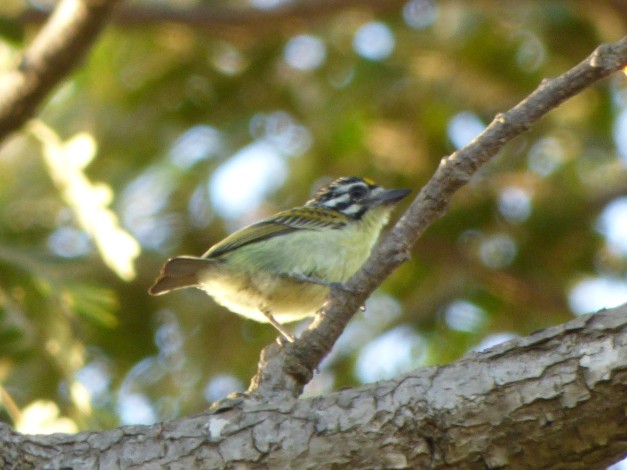
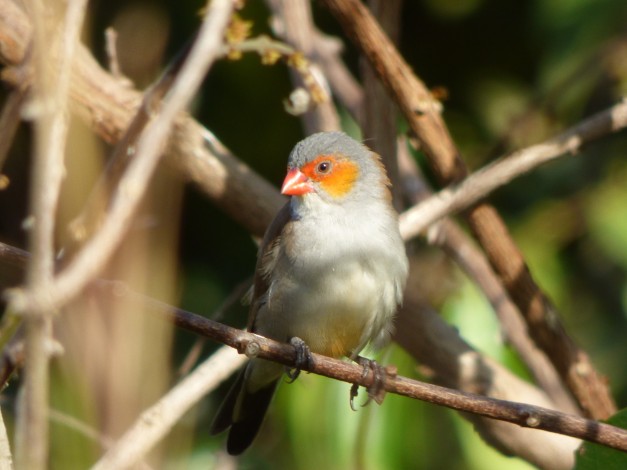
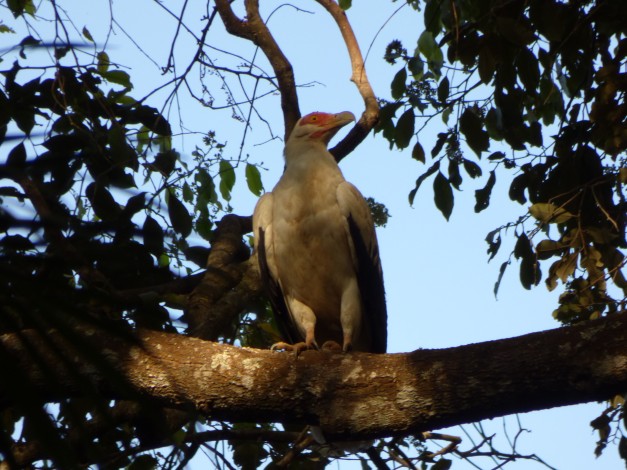
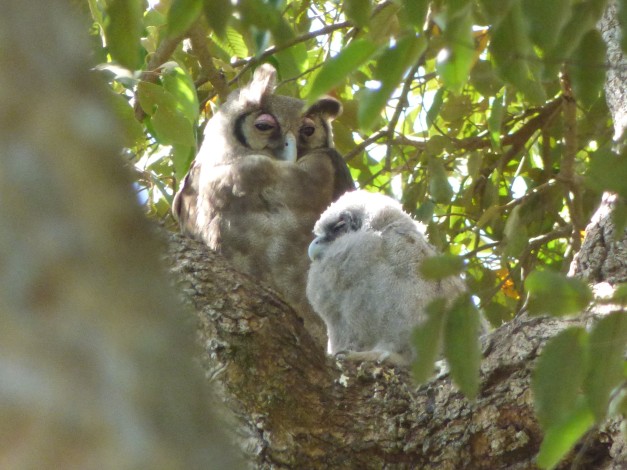
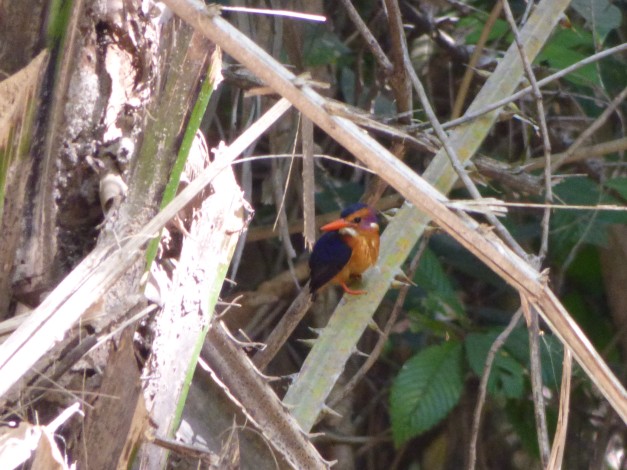
Not a bad end to our visit to Pirang. For lunch we decided to go to another pícnic as this was allowing us to spend more time in interesting spots. A drive brought throught interesting places with some impressive butterflies. This little transfer was having a small and unexpected break since my cap get off my head and actually went off the car so we, of course, had to stop and went back (in a quite busy road) so I was able to get my cap back. Fortunelly I think only a pair of cars went over the cap before I could get it back!!!
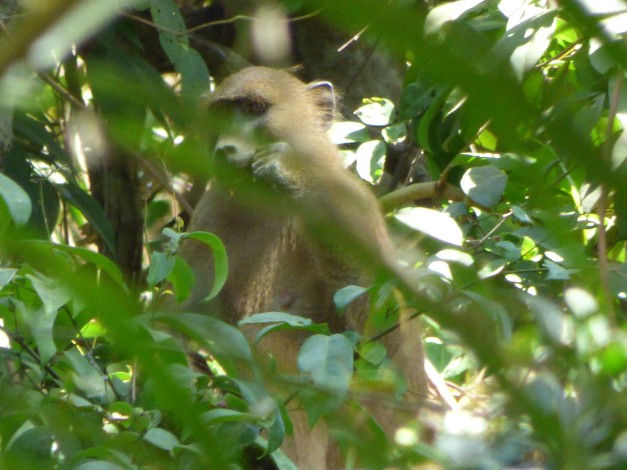
Finally arrived to the place, a pair of selected stops produced some good birds, including a pair of views on Beaudouin’s Snake Eagle, one of the main targets of the tour and quite celebrated in the group!
Some road birding was really productive with nice vice on Scarlet-chested Sunbirds, ruff views on Mottle Spinetail & Stone Partridge, Little Weaver and Variable Sunbird.
Once we arrived to the savannah we started adding some new species. A Black-winged Kite was really close to the road, as it was a Long-crested Eagle. Some skinny trees produced excellent birds including Striped Kingfisher, Northern Black Flycatcher, Dark-Chanting Goshawks, White-rumped Seedeaters and a very distant African Hawk Eagle. The final drive to our accommodation was still successful, with Fork-tailed Drongo, Shikra, Rufous-crowned Roller, Yellow-billed Shrike and Gabar Goshawk as road birds!
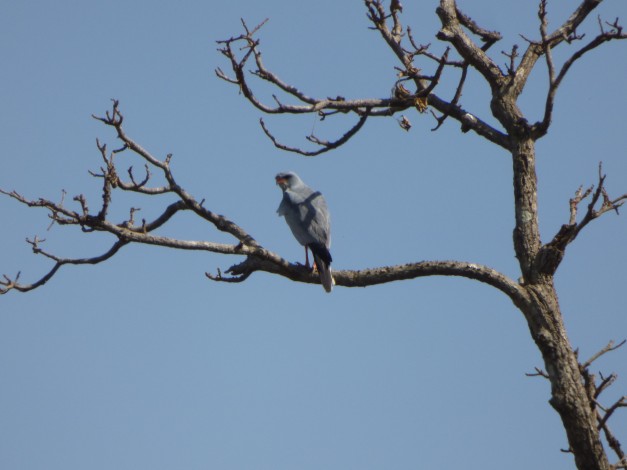

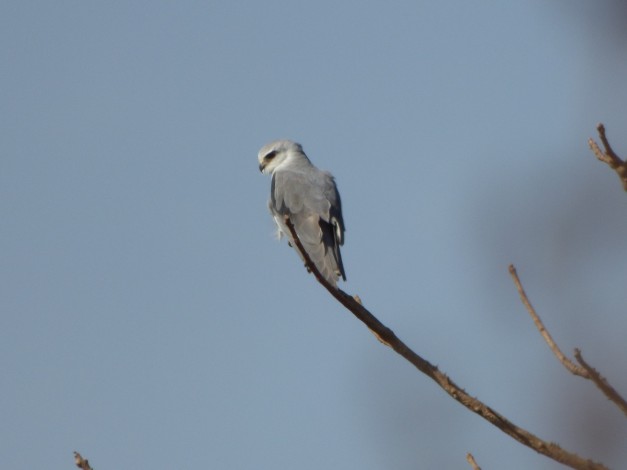
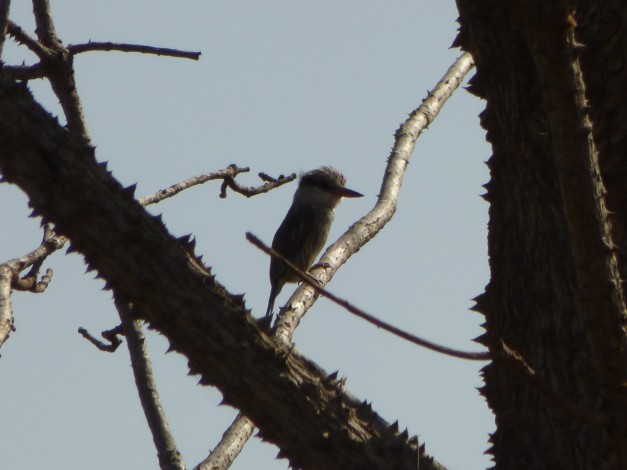
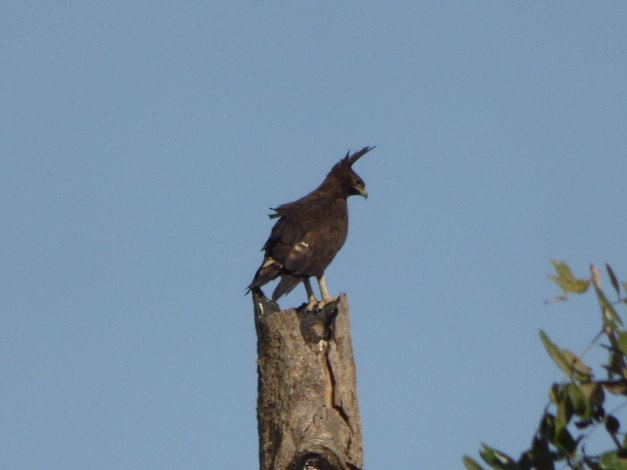

Day 7. Last day of our tour. This day we were concentrated in the grounds of our hotel. After breakfast we just went down to the gardens, where we had really good views on Oriole Warbler, White-crowned Robin-chat, Bronze-tailed Glossy Starling, Grey Woodpecker, Piapiacs, Broad-billed Rollers, a surprising Blue-breasted Kingfisher, Lesser Honeyguide, Village & Black-necked Weavers, Hamercop, Little Swifts, Purple Glossy Starlings and both Blackcap & Brown Babblers. Many of them allowing good photo chances. A short scanning in the sea produced a Great White Pelican, only the second of the trip!

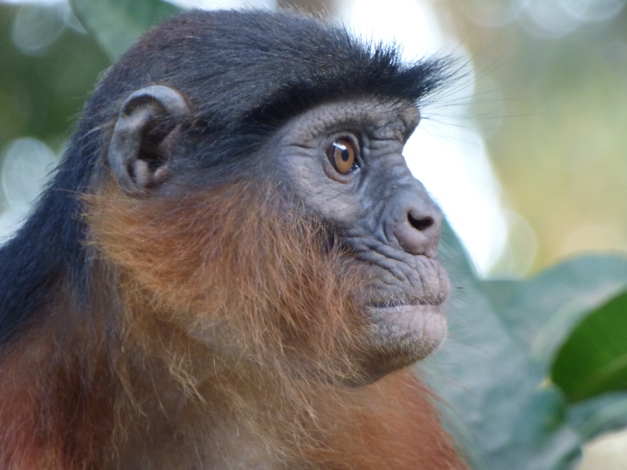
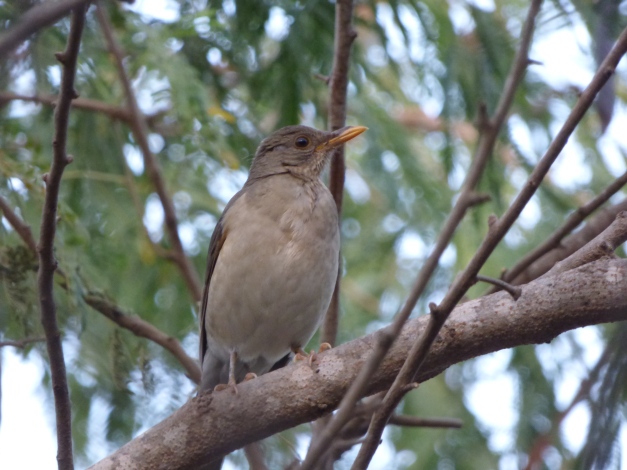
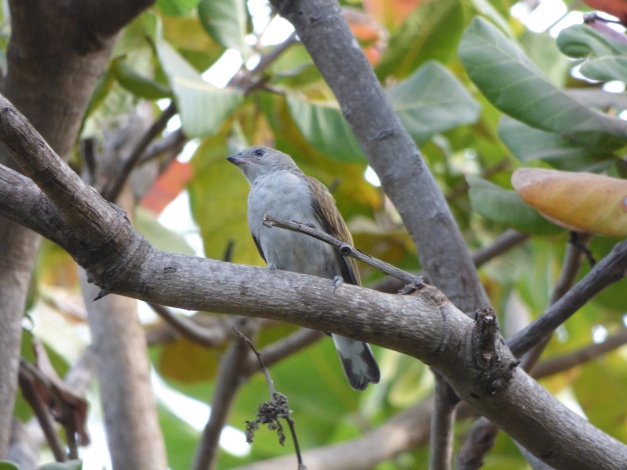
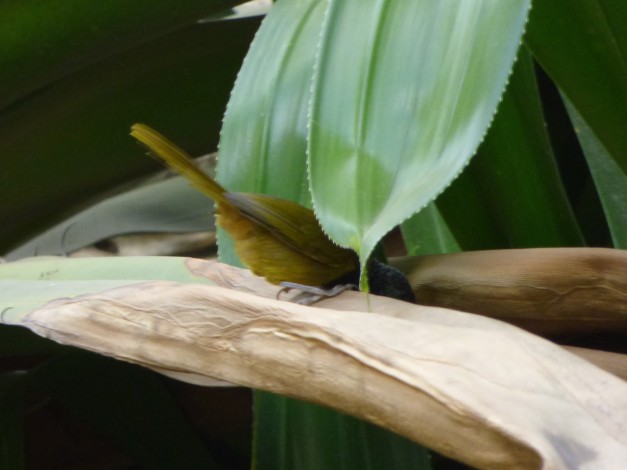
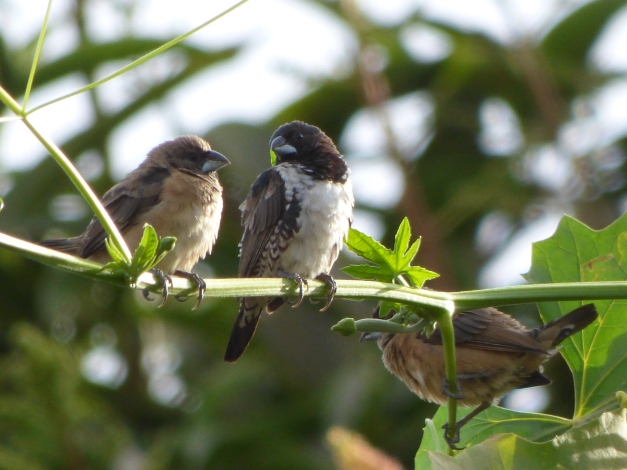
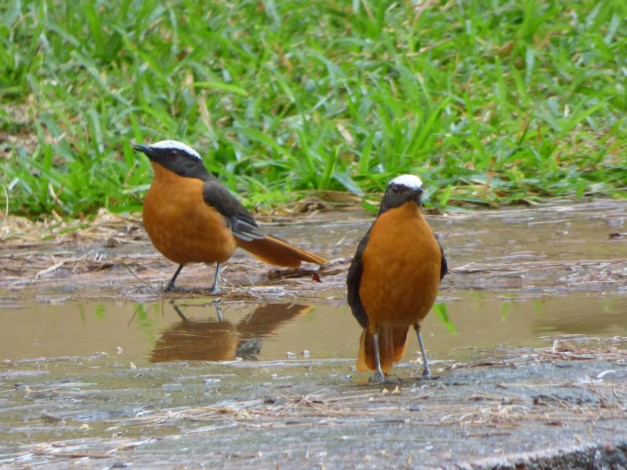
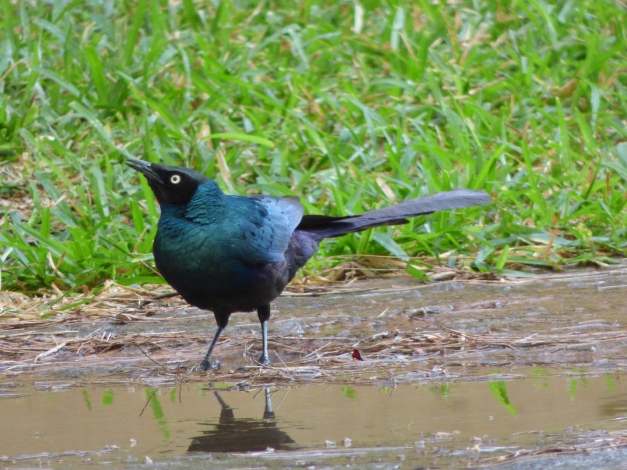
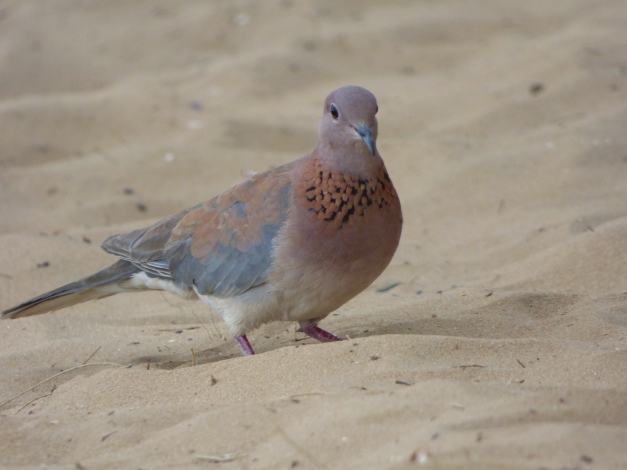
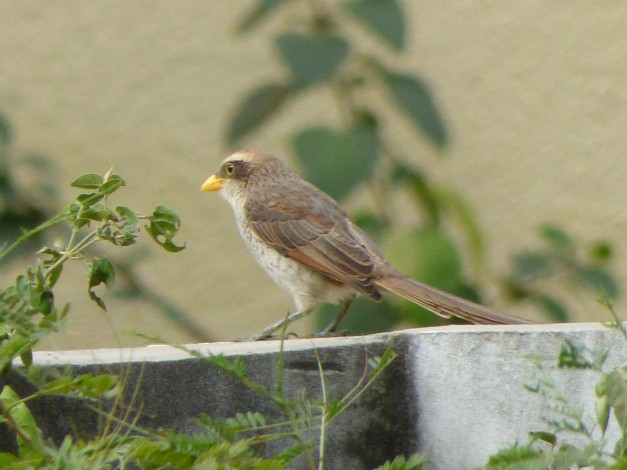
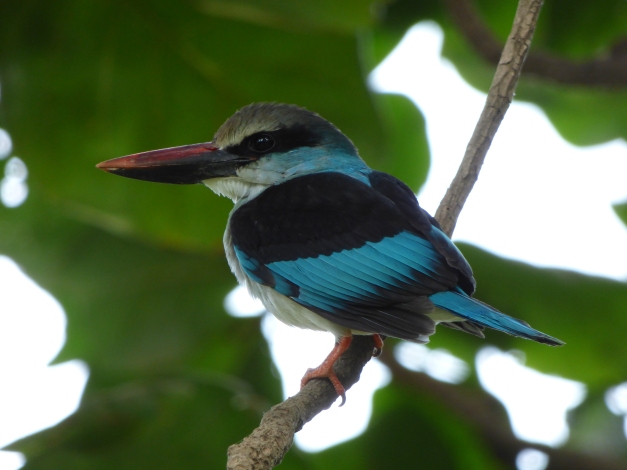
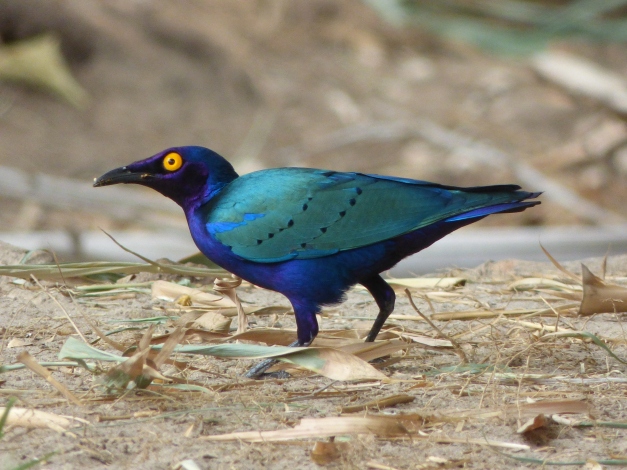
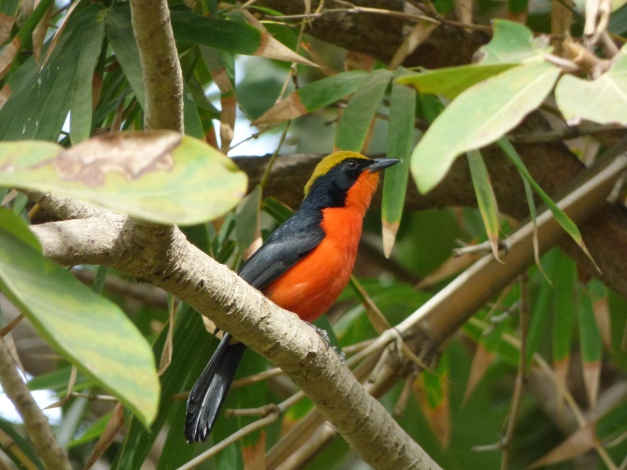
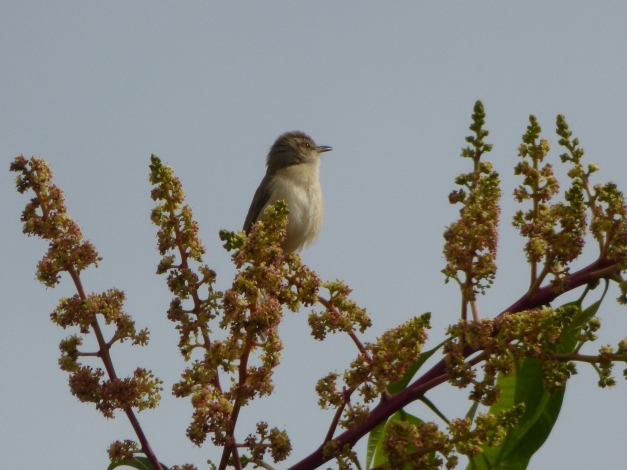
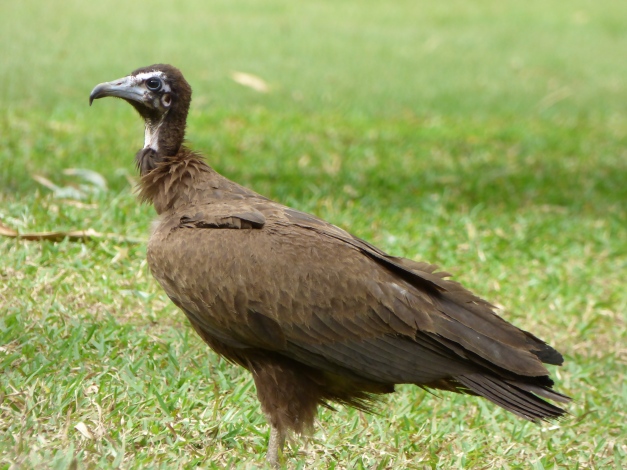
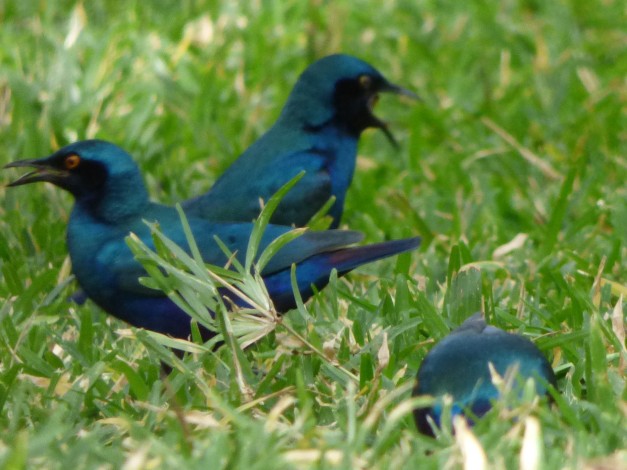
After enjoying the grounds and a good lunch in the beach we just took off to the airport, where our plane back to Barcelona was waiting for the group!
It has been a gorgeous 1st issue for our The Gambia tour.
Remember, in December 2019 we go on with the 2nd issue!! Join us for birds & fun!!!!
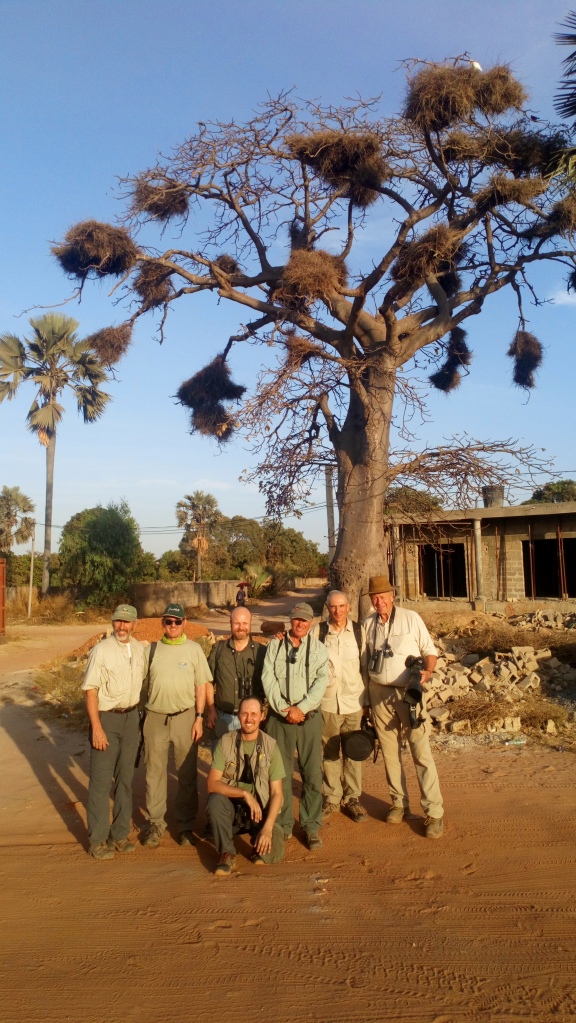
List of mammals of the tour:
- Guinea or Red Baboon (Papio papio)
- West Red Columbus (Piliocolobus badius)
- Patas Monkey (Cercopithecus patas)
- Callithrix Monkey (Cercopithecus sabaeus)
- Gambian Sun Squirrel (Heliosciurus gambianus)
- Striped Ground Squirrel (Euxerus erythropus)
List of reptilians of the tour:
- Gambia Agama (Agama weidholzi)
- Brook’s House Gecko (Hemydactylus brookii brookii)
- Nile Monitor (Varanus niloticus)
- Nile Crocodile (Crocodylus niloticus)
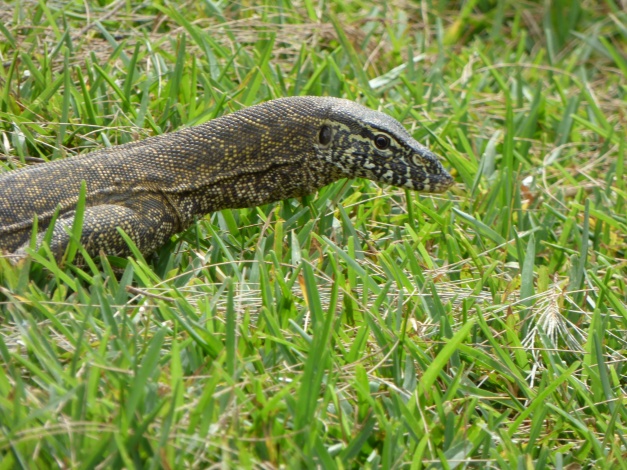
One of the three diferent Nile Monitors (Varanus niloticus) that we saw along the tour. Image by Carles Oliver

